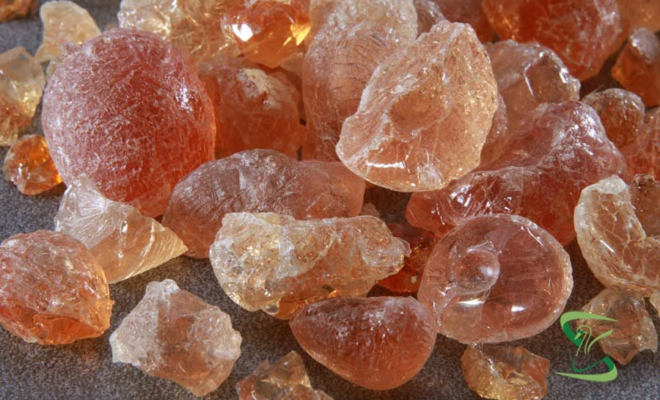GumArabic: A Natural GumUsed In Many Industries

Acacia gum, also called gum arabic, is a natural polysaccharide derived from exudates of Acacia trees produced in Africa. You will usually see the term “acacia gum” on several packaged foods since it is a popular component in many manufactured meals. However, it is also used in particular fabric manufacturing, medicinal formulation, ink, and even by some color makers. It has an ancient legacy of natural usage in the area and is now widely available in natural health shops worldwide.
What Exactly Is Gum Arabic?
This natural gum is derived from the sap of the Acacia Senegal tree and is utilized for medicinal purposes and the manufacturing of numerous products. It is also used in a variety of professional areas and plays a significant role in daily health. Having more gum arabic information might help you decide whether or not to use it in your diets regimen. Moreover, many gum arabic saps came from the Sudan region and Mauritania, Kenya, Niger, Senegal, Chad, Nigeria, Eritrea, and Mali.
In addition, laborers endure the thorns to remove the substance from the bark, which happens during the wet season. The sap is dried utilizing the country’s natural hot temperature, which is referred to as curing. As thousands of tons of sap are shipped to Europe each year for processing where it is cleansed, diluted with water, and dried again to form a powder many industries have grown to use it in various productions. Meanwhile, the sap is a polymer that is cold and highly soluble in water which thins out in its gum when the temperature increases.
Uses Of Gum Arabic
Gum arabic is a combination of excellent emulsifying properties and low solution viscosity which is present in packaged and refrigerated meals, snack foods, and sweets. It is also used as a flavor and stabilizer in drinks, as well as a flavor fixer, binder, mixer, and in avoiding crystals in sweet foods. Gum arabic is very nutritious since it is rich in fiber and low in fat. Moreover, it is used in producing glue, paints, carbonless paper, cosmetics, medicines, porcelain, pyrotechnics, cement, spark plugs, and many other products.
When burned, it enhances bond shapes, accumulates contaminants textile qualities, negatively charges water, forms a flexible film, and is a pollution-free binder. It is also used in the nutritional food business to suppress hunger, cure digestive issues, manage blood sugar problems, and control cholesterol.
Industrial And Food-Related Uses Of Gum Arabic
Gum arabic is now used in a variety of food-related and industrial applications. The primary forms of gums used in numerous sugary/confectionery items, for instance, include gum arabic, modified starch, pectin, and gelatin. Arabic gum is also often used to maintain a variety of goods, such as:
- Herbal supplements, tablets, and lozenges
- Ink, paints, pastels, as well as photographic and printer supplies
- Pottery and porcelain
- Envelopes and stamps
- A large selection of sweets and cooking ingredients
- Ice cream and other dairy items
- Fireworks
- Emulsifier for application to the skin
- Candies, both hard and soft
- Syrups
- Cosmetics
- Shoeshine
Gum Arabic Benefits
According to human and animal research, the advantages of gum arabic includes:
- Giving off dietary fiber and prebiotics.
- Feeding healthy microorganisms to the gut
- Assisting in the enhancement of fullness and satisfaction
- Aiding in weight reduction and preventing obesity
- Treating IBS signs and diarrhea
- Assisting in the regulation of cholesterol levels
- Combating insulin resistance, especially in type 2 diabetic patients
- Getting rid of oral bacteria on the teeth and gums, as well as battling gingivitis
- Because of its flavonoids, resins, and tannins, it has anti-carcinogenic, anti-swelling, and antioxidant effects
- Assisting in the reduction of skin irritation and erythema
Gum arabic is safe, edible, and natural for human ingestion. According to studies, it is non-toxic, particularly when taken at average levels, and is tolerable by persons with gluten sensitivity. Although gum is difficult to digest to both animals and people, the US Food and Drug Administration of US has regarded it as a safe soluble fiber since the 1970s.
Key Points On Gum Arabic
- Gum arabic may be taken as a powdered medication or used in tiny quantities while baking or cooking. It will assist pastries puff and develop a fluffy texture as well as provide a glossy surface to confectioneries products.
- Gum arabic is a natural gum that is utilized as a thickening agent, mixer, and taste enhancer in various meals and commercial items. It is extensively used in the pharmaceuticals, culinary, textile, ceramics, and cosmetics sectors.
- Gum arabic is hard to digest in humans, which means its yeast fermentation in the colon rather than being dissolved in the intestines. This has a pool of possible health advantages, like functioning as a prebiotic, improving gut health, assisting with satiety and appetite management, and assisting in the treatment of diabetes, cholesterol, and body fat.
- Although high dosages of gum arabic do not seem to offer any substantial health hazards, excessive use may cause bloating, constipation, and indigestion.

